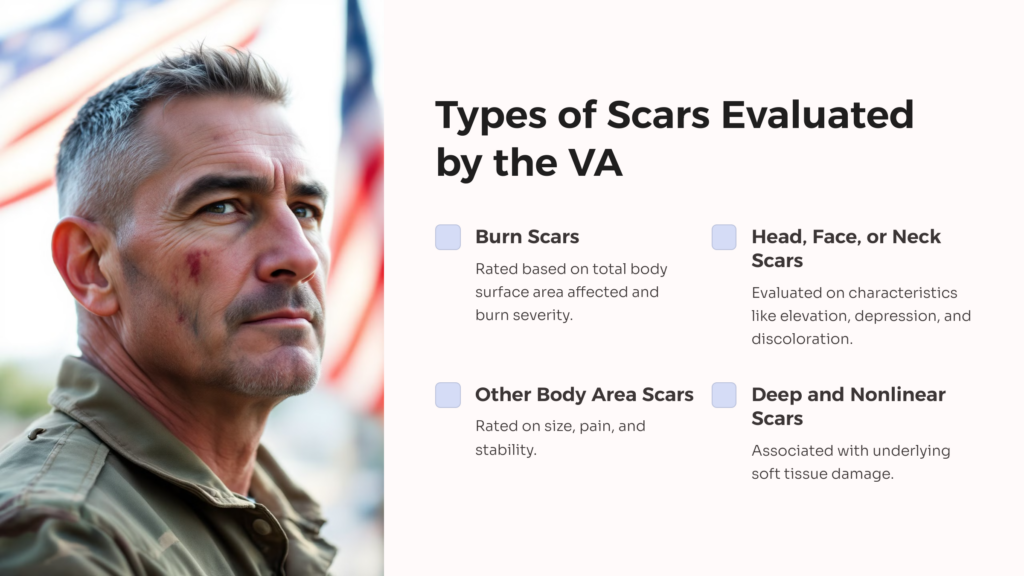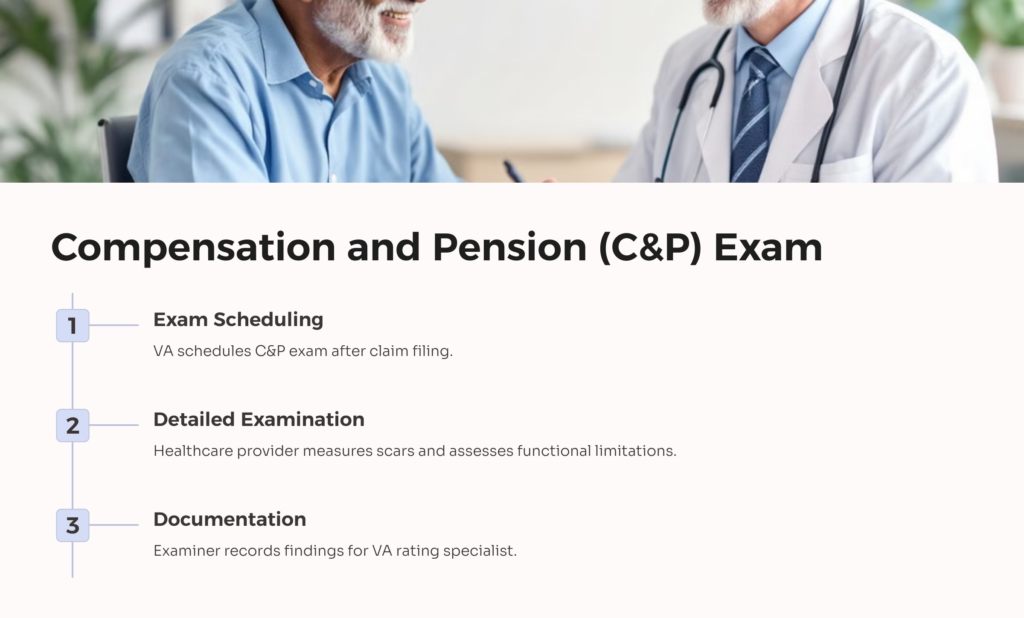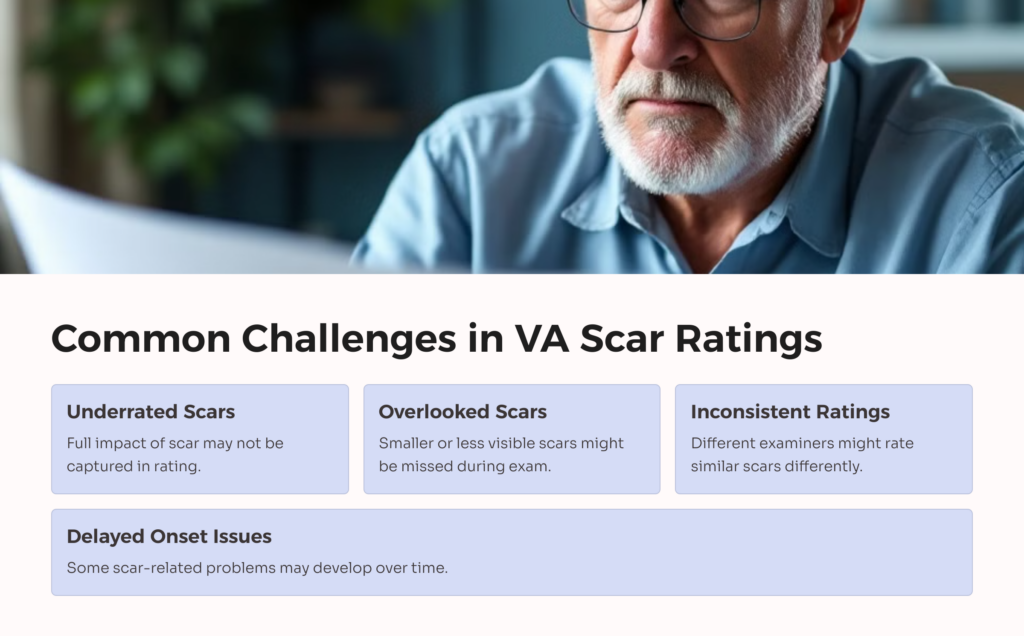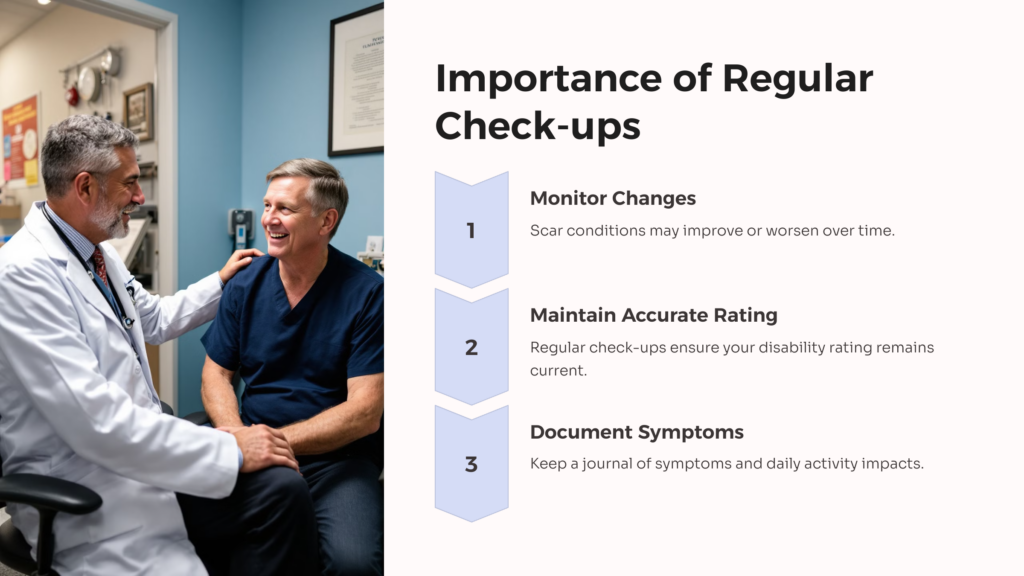Veterans who have served our country often bear physical reminders of their sacrifice. Scars from injuries or surgeries can be more than skin deep, affecting daily life and overall well-being. The Department of Veterans Affairs (VA) recognizes this and provides disability compensation for qualifying scars. But how does the VA determine these ratings? Let’s dive into the world of VA scar ratings to help you understand what to expect.
VA scar ratings are based on several factors, including the size, location, and impact of the scar on your daily functions. The ratings can range from 0% to 100%, with higher percentages indicating more severe impairment. It’s important to note that even a 0% rating can be beneficial, as it acknowledges a service-connected condition and may make you eligible for other VA benefits.
Types of Scars Evaluated by the VA

The VA categorizes scars into several types, each with its own set of rating criteria. Understanding these categories can help you better prepare your claim and communicate with your healthcare provider.
- Burn scars: These are rated based on the total body surface area affected and the severity of the burn.
- Scars of the head, face, or neck: These are evaluated based on characteristics like elevation, depression, adherence to underlying tissue, and discoloration.
- Scars on areas other than the head, face, or neck: These are primarily rated based on their size and whether they are painful or unstable.
- Deep and nonlinear scars: These are scars that are associated with underlying soft tissue damage.
- Superficial and nonlinear scars: These are scars that are not associated with underlying soft tissue damage.
Each type of scar is evaluated differently, and it’s possible to have multiple ratings for different scars or even for a single scar that fits into multiple categories.
How the VA Rates Scars
The VA uses a specific set of guidelines to rate scars, which are outlined in the Code of Federal Regulations, Title 38, Part 4, Schedule for Rating Disabilities. This document is often referred to as the VA Rating Schedule.
For scars on the head, face, or neck, the VA considers eight characteristics of disfigurement:
- Scar 5 or more inches (13 or more cm) in length
- Scar at least one-quarter inch (0.6 cm) wide at widest part
- Surface contour of scar elevated or depressed on palpation
- Scar adherent to underlying tissue
- Skin hypo- or hyper-pigmented in an area exceeding six square inches (39 sq. cm)
- Skin texture abnormal in an area exceeding six square inches (39 sq. cm)
- Underlying soft tissue missing in an area exceeding six square inches (39 sq. cm)
- Skin indurated and inflexible in an area exceeding six square inches (39 sq. cm)
The presence of one or more of these characteristics can result in ratings from 10% to 80%.
For scars on other areas of the body, the rating is primarily based on the size of the scar and whether it’s painful or unstable. An unstable scar is one where, for any reason, there is frequent loss of covering of skin over the scar.
Compensation and Pension (C&P) Exam for Scar Rating

When you file a claim for scar-related disability, the VA may schedule you for a Compensation and Pension (C&P) exam. This exam is a critical part of the rating process, as it provides the VA with the medical evidence needed to assign a rating.
During the C&P exam, a healthcare provider will examine your scars in detail. They’ll measure the size, check for pain or instability, and assess any functional limitations caused by the scars. It’s important to be honest and thorough during this exam, describing how your scars affect your daily life.
The examiner will document their findings, which will be used by the VA rating specialist to determine your disability rating. Remember, the examiner doesn’t decide your rating; they simply provide the medical evidence.
Tips for Filing a VA Claim for Scars
Filing a claim for scar-related disability can seem daunting, but with the right approach, you can improve your chances of a fair rating. Here are some tips to keep in mind:
- Document everything: Keep detailed records of your injuries, treatments, and how the scars affect your daily life.
- Get supporting statements: Statements from family, friends, or coworkers who have witnessed the impact of your scars can be valuable evidence.
- Be specific in your claim: Clearly describe each scar, its location, size, and any associated symptoms or limitations.
- Attend your C&P exam: This is crucial for providing the VA with current medical evidence.
- Consider seeking help: Veterans Service Organizations (VSOs) can provide free assistance with your claim.
Remember, the goal is to paint a clear picture of how your scars affect your life, so the VA can accurately assess your disability.
Common Challenges in VA Scar Ratings

While the VA has specific guidelines for rating scars, there can still be challenges in the process. Some common issues veterans face include:
- Underrated scars: Sometimes, the full impact of a scar isn’t captured in the rating.
- Overlooked scars: Smaller or less visible scars might be missed during the exam.
- Inconsistent ratings: Different examiners might rate similar scars differently.
- Delayed onset issues: Some scar-related problems may develop over time and not be present during the initial rating.
If you believe your scar rating doesn’t accurately reflect your condition, you have the right to appeal the decision. This might involve requesting a higher-level review, submitting new evidence, or appealing to the Board of Veterans’ Appeals.
The Importance of Regular Check-ups

Your scar condition may change over time, either improving or worsening. Regular check-ups with your healthcare provider are important not only for your health but also for maintaining an accurate disability rating.
If you notice your scar condition worsening, you can file for an increased rating. On the other hand, the VA may also schedule you for periodic re-examinations to assess if your condition has improved.
These check-ups provide an opportunity to discuss any new symptoms or limitations related to your scars. Keep a journal of your symptoms and how they affect your daily activities to share with your healthcare provider.
AllVeteran.com Is Here To Help
Understanding VA ratings and the claim process can be complex, but it’s an important part of ensuring you receive the compensation you deserve for your service-connected injuries. Remember, each case is unique, and ratings can vary based on individual circumstances.
If you’re struggling with the claims process or have questions about your rating, don’t hesitate to seek help. Veterans Service Organizations, VA representatives, and even fellow veterans can provide valuable support and guidance.
Your scars tell a story of sacrifice and service. By understanding the VA rating system, you can better advocate for yourself and ensure that your service-connected disabilities are properly recognized and compensated. Start down the path to benefits today by taking our free medical evidence screening at AllVeteran.com!
 AllVeteran.com Advisors
AllVeteran.com Advisors
With expertise spanning local, state, and federal benefit programs, our team is dedicated to guiding individuals towards the perfect program tailored to their unique circumstances.


















